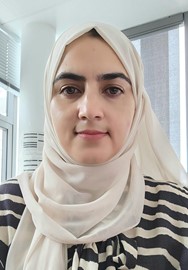"Silver nanowires Network as Transparent Electrodes for Electrochromic Devices"

University Grenoble Alpes, LMGP Grenoble
ICMCB Bordeaux
Abstract
Electrochromism refers to the ability of materials to change their optical properties, such as transmittance for instance, under an applied voltage. Electrochromic devices (ECDs), typically consist of multiple layers stacked together as two outer transparent conducting layers, an electrochromic layer, and a counter electrode separated by an electrolyte. Indium tin oxide (ITO) is used extensively as a transparent electrode for electrochromic devices due to its high transparency, electrical conductivity, and chemical stability. However, some main limitations are its relatively high cost, scarcity, and brittleness, limiting its use in some applications. Silver nanowire (AgNW) networks appear a promising alternative thanks to their high optical transparency, excellent electrical properties, and mechanical flexibility, and have indeed gained much attention in the last few years. The present work aims to prepare ITO-free electrochromic films and devices using AgNW networks as a transparent electrode. To improve the stability, AgNW networks are coated with a thin conformal protective oxide layer, ZnO and SnO2, using atmospheric pressure spatial atomic layer deposition (AP-SALD). The performance of different electrochromic materials, like V2O5, NiO, and WO3, deposited by radio frequency magnetron sputtering on AgNWs are investigated through cyclic voltammetry, chronoamperometry, and switching kinetics through in-situ opto-electrochemical measurement. The AgNWs-based WO3 and NiO thin films are then integrated into ECDs to investigate their stability and electrochromic performance in a complete device.
Short Bio/CV
PhD student working on ‘Development of thin films based on metallic nanowire networks and functional oxides for energy-efficient smart windows.’
- Fabrication and optimization of stable silver nanowiresbased transparent electrodes at Laboratory of Materials and Physical Engineering (LMGP), Grenoble supervised by Daniel Bellet.
- Deposition and characterization of functional oxide (V2O5, WO3, and NiO) layers at the Institute of Condensed Matter Chemistry of Bordeaux (ICMCB), Bordeaux supervised by Aline Rougier.
Integration of AgNWs-based transparent electrodes to conceive efficient, low-cost, and stable electrochromic devices, at both LMGP and ICMCB.



